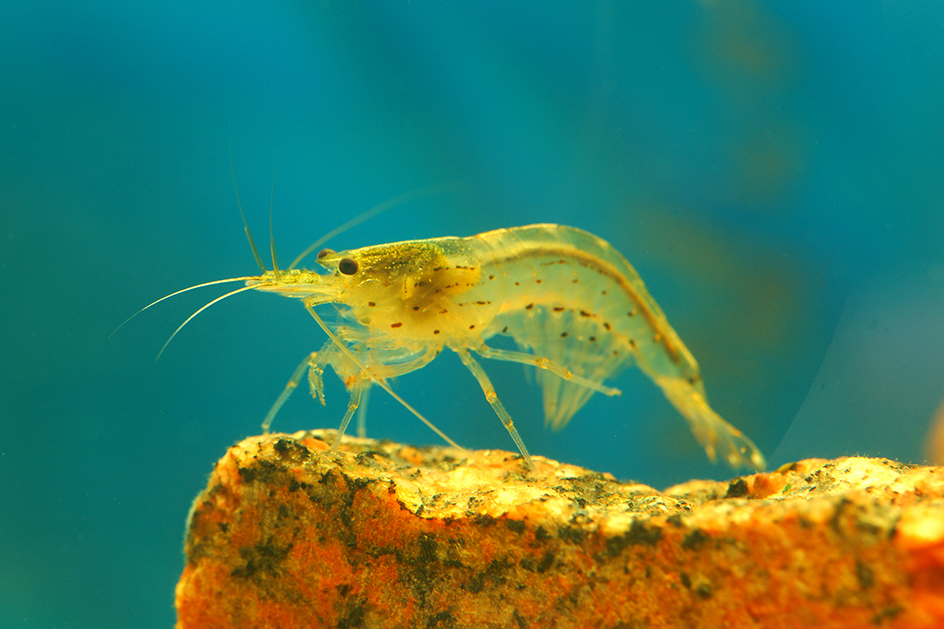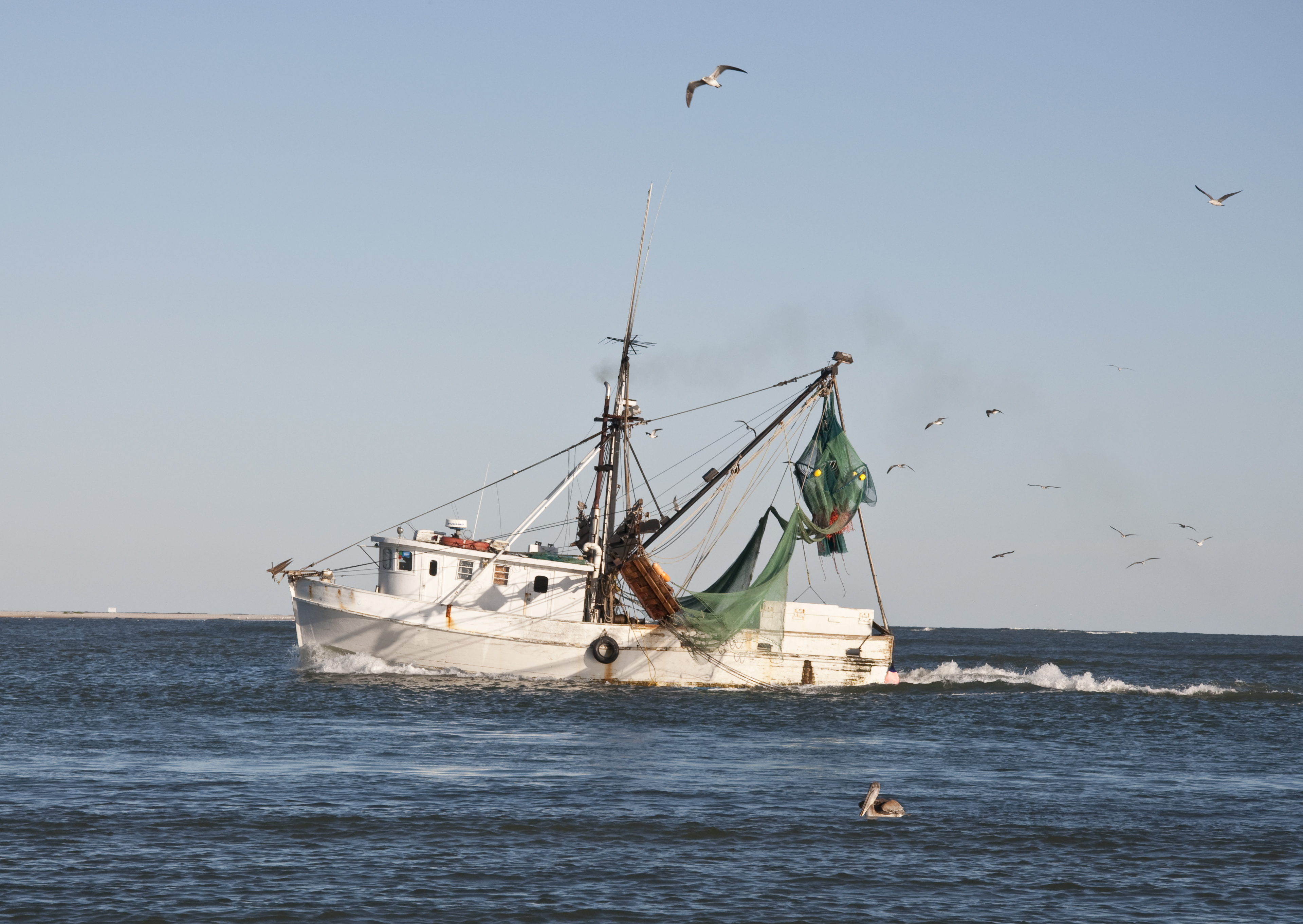Shrimp are delicate shellfish related to crabs and lobsters. Shrimp are a popular food and a valuable catch for fishing crews.

Shrimp are found in fresh and salt water in nearly all parts of the world. Some species live near the shore, where they hide in mud or sand by day and feed by night. Others swim about in groups in deep, cold water. A shrimp generally swims forward. It can swim backward by flipping its fan-shaped tail.
Most shrimp are gray, brown, white, or pink. Other shrimp are red, yellow, green, or blue, and some—such as the peppermint shrimp—have stripes. Some shrimp can change color to match their surroundings. Some species give off light, an example of bioluminescence.
The smallest shrimp are less than 1 inch (2.5 centimeters) long. Some giant freshwater species grow more than 1 foot (30 centimeters) long and have antennae (feelers) equally long. Larger shrimp are sometimes called prawns.
Shrimp larvae (young) and some small adults eat plankton (tiny living things that drift in the water). Most adult shrimp feed on material on the sea floor. Shrimp, in turn, serve as an important food for fish and other water animals. Some shrimp help “clean” fish by feeding on parasites from the fish’s gills, mouth, and scales.
The body of a shrimp
has two main parts, the cephalothorax (head and midsection) and the abdomen (tail). An unjointed shell covers the cephalothorax. A shrimp can bend because the shell of the abdomen is jointed.
Most shrimp have 19 pairs of appendages, including antennae and jointed legs. At the front of the cephalothorax are two pairs of antennae—one pair for smelling the water and the other pair for feeling and tasting objects. The next pair of appendages serve as jaws, followed by five pairs that handle food. The last five pairs of appendages are walking legs. The abdomen has five pairs of fanlike swimmerets, which are used in forward swimming and reproduction. The last pair of tail appendages form part of the shrimp’s tail.
Most shrimp have pincerlike claws on their two front pairs of walking legs. A shrimp uses its claws to gather food, to fight, and to dig burrows in which to hide. The pistol shrimp makes a sound like a gunshot by snapping one of its claws.
A shrimp’s stiff shell entirely encloses its body. It is made of a substance called chitin. In order to grow, a shrimp must form a new, flexible shell beneath the hard, old shell. The shrimp then molts (sheds) the old shell and quickly expands the new one before it hardens. A shrimp molts many times during its life. A new, larger shell hardens after each molt. If appendages have been lost, new ones develop over the course of several molts.
The life of a shrimp.
Various species of shrimp have different life cycles. Some live a year at most, but others may live five years or more. Females of some species protect their developing eggs by carrying them on their swimmerets. In other species, females spawn their fertilized eggs directly into the water and swim away, leaving the eggs to develop and hatch on their own.
A group of familiar food shrimps called penaeid shrimp hatch from eggs laid in the ocean up to 100 miles (160 kilometers) offshore. A newly hatched penaeid shrimp resembles a tiny pear with legs. It develops through several changes in shape until, after two to four weeks, it resembles a miniature adult.
Young penaeid shrimp move toward shore as they develop, but 80 percent or more may be eaten by sea animals along the way. The survivors settle in marshes and river mouths. After about five to seven months of rapid growth, the shrimp begin a two-month trip back to deeper water. They breed in deep water, and each female lays 500,000 to 1,000,000 eggs.
Shrimp and people.
Fishing crews use pouch-shaped nets called trawls to catch shrimp. The catch is frozen or canned quickly because fresh shrimp spoil easily. Countries with large catches include Argentina, China, Indonesia, Mexico, Thailand, and the United States. Louisiana and Texas rank as the leading shrimp-producing U.S. states. People also raise shrimp on farms.

Dozens of shrimp species have become endangered due to overfishing or destruction of habitat. In addition, shrimp trawls can capture or harm large amounts of other marine wildlife, damaging the environment.
